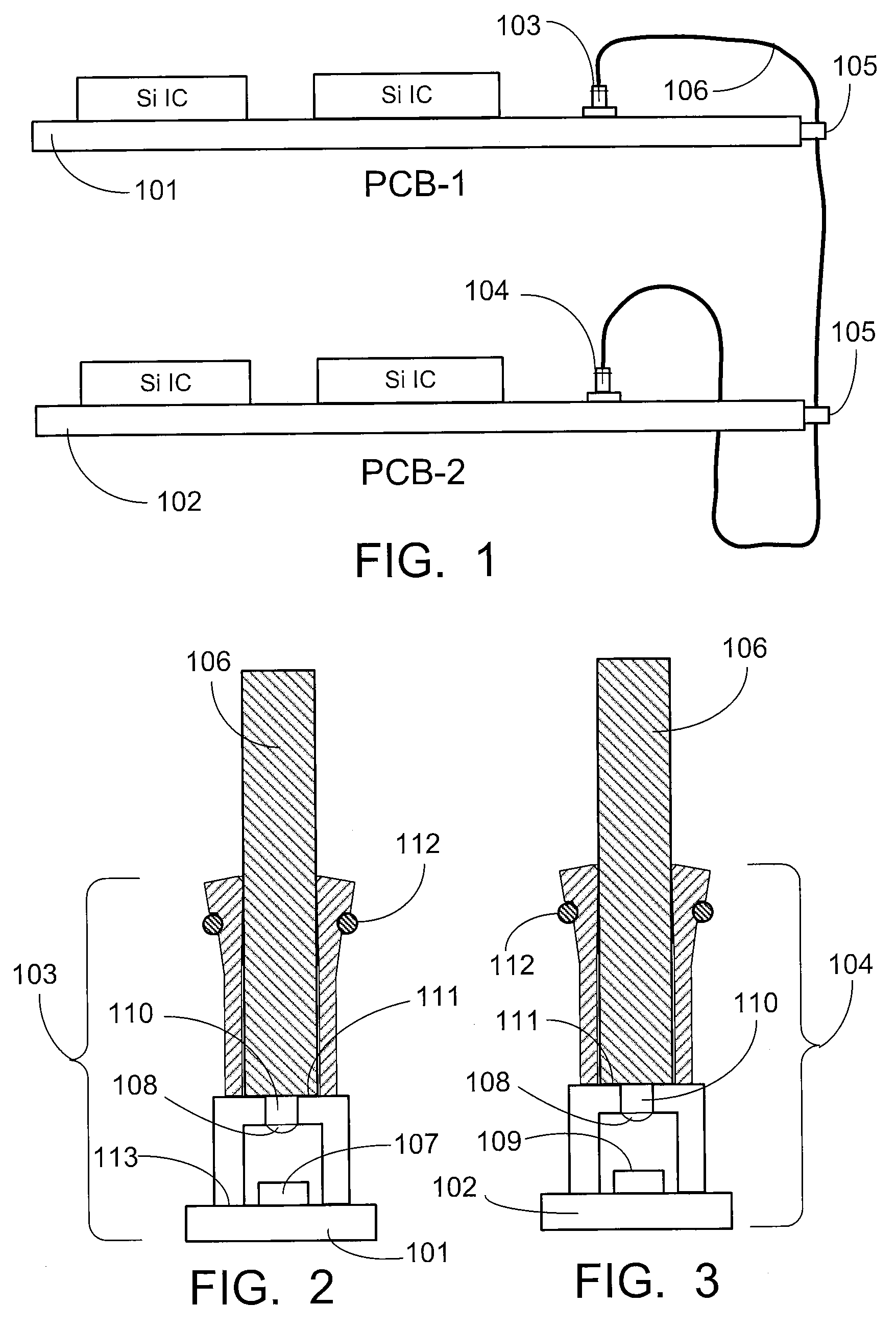Optical interconnect solution
a technology of optical interconnection and solution, applied in the direction of optical elements, circuit optical details, instruments, etc., can solve the problems of high resistance, large power consumption, high frequency electrical signals, etc., and achieve the effects of reliable microdevices, high speed connections, and low cos
- Summary
- Abstract
- Description
- Claims
- Application Information
AI Technical Summary
Benefits of technology
Problems solved by technology
Method used
Image
Examples
Embodiment Construction
[0018]Detailed embodiments of the present invention are disclosed herein; however, as will be readily apparent to those skilled in the art, the present invention may be produced in other specific forms without departing from its spirit or essential characteristics. The present embodiments, are therefore, to be considered as illustrative and not restrictive, the scope of the invention being indicated by the claims rather than the following description, and all changes which come within the meaning and range of the equivalence of the claims are therefore intended to be embraced therein.
[0019]Referring to FIG. 1, a first connector 103 is attached to an originating PCB 101 and so integrated as to receive electrical signals to be transmitted to a receiving PCB 102. The electrical signals are converted by the first connector 103 to optical signals which are then transmitted via a bare optical fiber 106 (no ferrule or other type of cap or connector device is present or necessary). The bare...
PUM
 Login to View More
Login to View More Abstract
Description
Claims
Application Information
 Login to View More
Login to View More - R&D
- Intellectual Property
- Life Sciences
- Materials
- Tech Scout
- Unparalleled Data Quality
- Higher Quality Content
- 60% Fewer Hallucinations
Browse by: Latest US Patents, China's latest patents, Technical Efficacy Thesaurus, Application Domain, Technology Topic, Popular Technical Reports.
© 2025 PatSnap. All rights reserved.Legal|Privacy policy|Modern Slavery Act Transparency Statement|Sitemap|About US| Contact US: help@patsnap.com


